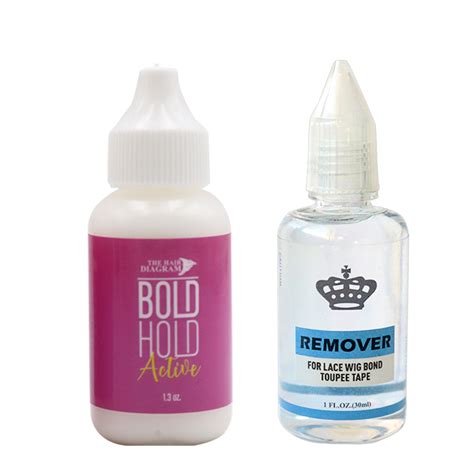Choosing the Right Wig Glue: A Buyer’s Guide
For effortless wig installations and long-lasting hold, the right wig glue is crucial. With a plethora of options available, selecting the ideal adhesive can seem daunting. This comprehensive guide will provide you with everything you need to know about wig glue, empowering you to make an informed choice.

Factors to Consider When Choosing Wig Glue
1. Wig Material: Different wig materials require specific adhesives. Synthetic wigs demand oil-based glues, while human hair wigs can handle water-based and silicone-based options.
2. Hold Strength: The holding power of a wig glue is measured in ounces, with higher values indicating a stronger hold. Choose a glue that matches your hair density and desired wear time.
3. Application Method: Wig glues come in different formats, including liquid, tape, and adhesive spray. Select a method that aligns with your comfort level and application preferences.
4. Removal Ease: Not all wig glues are created equal for easy removal. Some adhesives require harsh solvents, while others offer gentler removal options. Consider the frequency of your wig removal and choose accordingly.
5. Allergic Reactions: Ensure that you are not allergic to the ingredients in the wig glue before use. Patch test on a small area of skin to avoid any potential irritation.
Types of Wig Glue
1. Water-Based Glue
Benefits: Suitable for human hair wigs, easy application and removal, less residue, comfortable
Drawbacks: Lower hold strength, less waterproof
2. Oil-Based Glue
Benefits: High hold strength, waterproof, suitable for synthetic wigs
Drawbacks: Difficult removal, chemical odor, potential skin irritation
3. Silicone-Based Glue
Benefits: Waterproof, strong hold, low residue, easy removal
Drawbacks: Not suitable for all skin types, can be difficult to apply
4. Adhesive Tape
Benefits: Easy application and removal, low residue, secure hold
Drawbacks: Can be visible on hairline, less waterproof than glue
5. Lace Adhesive Spray
Benefits: Conceals lace front wigs, easy application, waterproof
Drawbacks: Lower hold strength
Table 1: Comparison of Wig Glue Types
| Glue Type | Hold Strength | Removal Ease | Residue | Comfort |
|---|---|---|---|---|
| Water-Based | Low | Easy | Less | Comfortable |
| Oil-Based | High | Difficult | More | Less comfortable |
| Silicone-Based | Strong | Easy | Low | Comfortable |
| Adhesive Tape | Secure | Easy | Less | Comfortable |
| Lace Adhesive Spray | Low | Easy | Less | Less comfortable |
Tips and Tricks for Applying Wig Glue
- Cleanse Your Scalp: Start with a clean scalp to ensure adhesive adhesion.
- Test on a Patch: Apply a small amount of glue to a patch of skin to check for allergic reactions.
- Apply a Thin Layer: Use a thin, even layer of glue to avoid excess residue and premature loosening.
- Press Firmiy: Firmly press the wig onto the glued area to ensure a secure bond.
- Allow Drying Time: Let the glue dry completely before wearing the wig to prevent slippage.
Benefits of Using Wig Glue
- Maintain a secure hold for long periods
- Prevent wig slippage and movement
- Conceal the hairline for a more natural look
- Protect the wig from moisture and sweat
FAQs about Wig Glue
1. Can everyday wig glue damage my hair or scalp?
Properly applied and removed wig glue should not damage hair or scalp. However, excessive glue use or improper removal techniques can lead to hair loss or irritation.
2. What is the best way to remove wig glue?
For oil-based glues, use a solvent-based glue remover. Water-based glues can be removed using rubbing alcohol or water.
3. How often should I apply wig glue?
Reapply wig glue as needed, based on the hold strength and your desired wear time.
4. Can I sleep in a wig glued to my head?
While some glues can withstand overnight wear, it is generally not recommended. Remove the wig before bed to allow your scalp to breathe.
5. What is a good alternative to wig glue?
Lace adhesive tape is a less permanent alternative to wig glue, providing a secure hold without the need for direct skin contact.
6. Can I use wig glue to bond other items to my skin?
Wig glue is specifically formulated for wig application and should not be used on other areas of the body.
Conclusion
Choosing the right wig glue can elevate your wig installation experience. By following the tips and recommendations outlined in this guide, you can achieve a secure, natural-looking, and long-lasting wig hold. Remember to consider your wig material, hold strength requirements, comfort level, and ease of application when making your choice. With the perfect wig glue, you can confidently rock your wig with style and poise.
Table 2: Wig Glue Shopping Guide by Wig Material
| Wig Material | Recommended Glue |
|---|---|
| Synthetic | Oil-Based Glue |
| Human Hair (Natural) | Water-Based Glue, Silicone-Based Glue |
| Human Hair (Processed) | Silicone-Based Glue |
Table 3: Wig Glue Removal Guide
| Glue Type | Removal Method |
|---|---|
| Water-Based | Rubbing Alcohol, Water |
| Oil-Based | Solvent-Based Glue Remover |
| Silicone-Based | Silicone-Based Glue Remover |
| Adhesive Tape | Adhesive Tape Remover, Rubbing Alcohol |
Table 4: Wig Glue Maintenance Tips
| Tip | How It Benefits |
|---|---|
| Reapply as Needed | Maintain a secure hold |
| Avoid Excessive Glue | Prevent residue and premature loosening |
| Use a Wig Grip | Reinforce hold, reduce glue use |
| Store Glue Properly | Ensure longevity and prevent spoilage |
